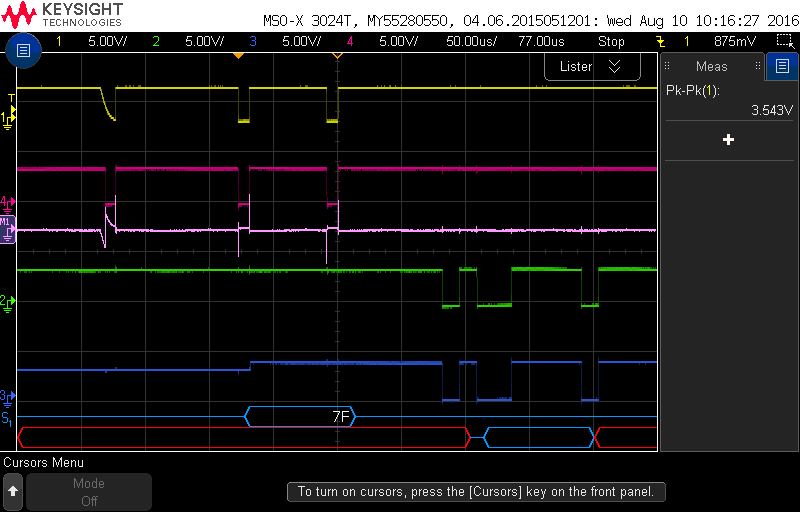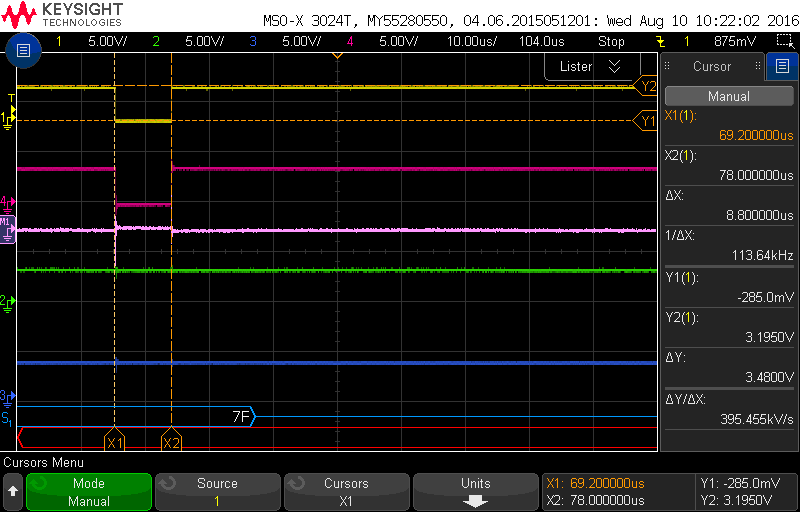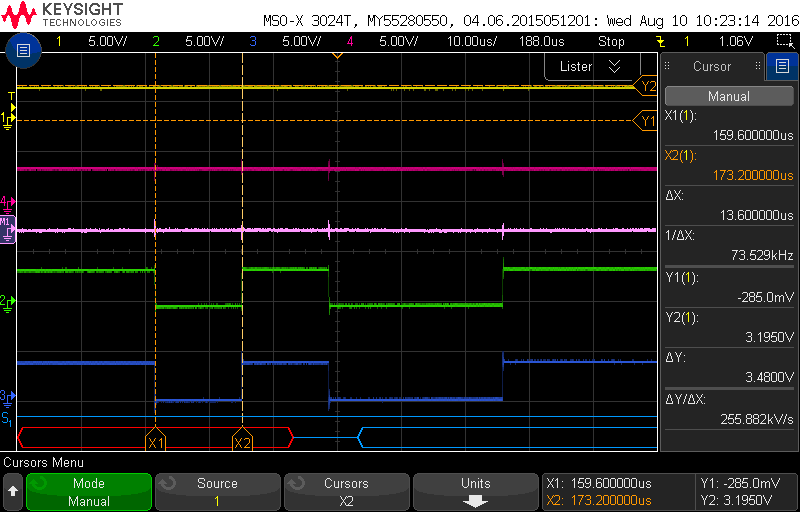Hello Everyone,
I'm using a pair of SN65HVD379DR RS485 chips to communicate between 2 micros on separate PCB's. The communication is clean and works great after firmware is loaded onto both boards. A requirement of this control system is the smaller micro must be updated by the main control board as it is inaccessible to the end user.
The micros were originally communicating directly with each other, but we had noise issues, so we switched to RS485. The communication now works great in normal use, but the firmware now fails to update via the main control board!
Some additional Info:
- Micro on daughter board requiring FW upload is STM32F051R8T6TR
- Daughter Micro is set into boot mode by powering the PCB down (power is supplied by main control board), switching the boot signal, and powering back up.
- bypassing the RS485 chips on testbench results in successful FW upload
- micro being updated utilizes "autobaud" when in boot mode. signal sent back to micro performing upload is slower than what is sent by main control board.
Does anyone have a suggestion on further troubleshooting, crosses that can perform this function, or any other ideas? I have been hunting this issue down for a while with little success.
Thank you in advance for your time.




